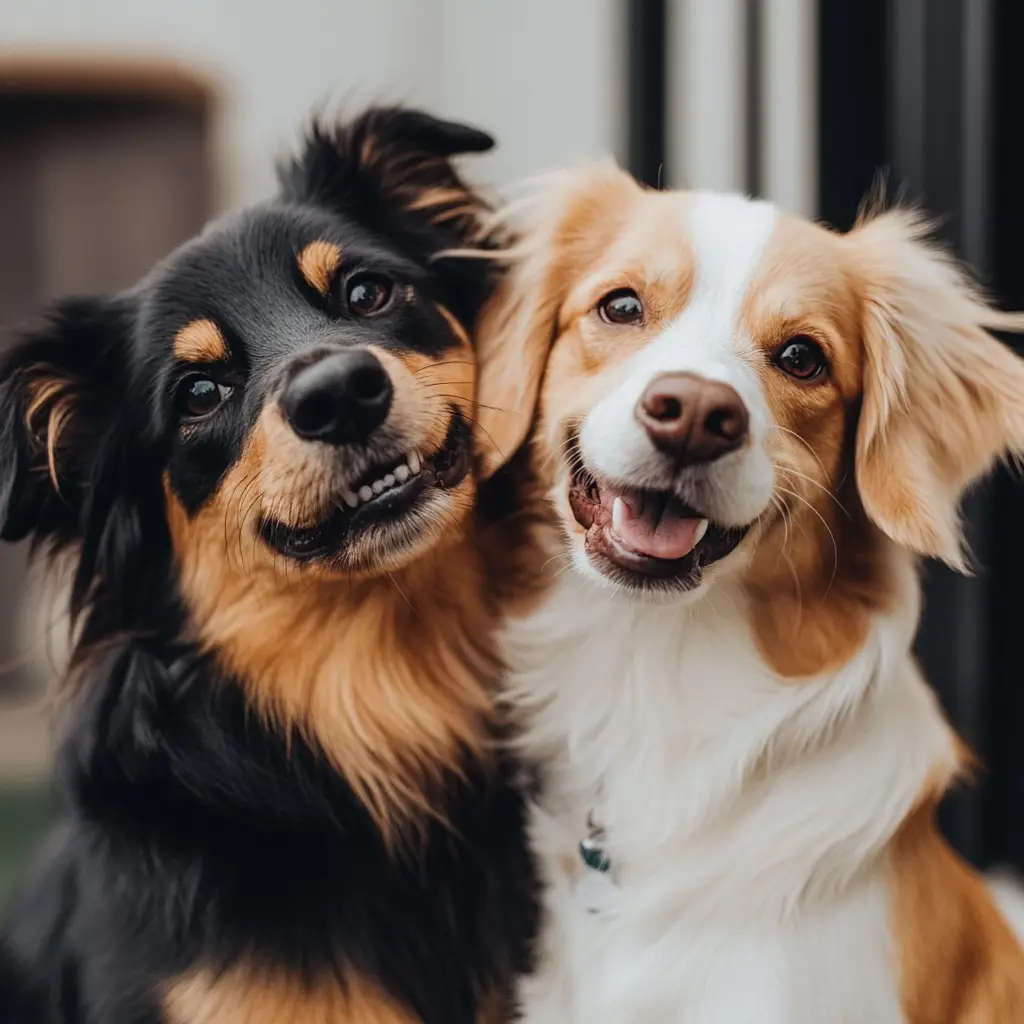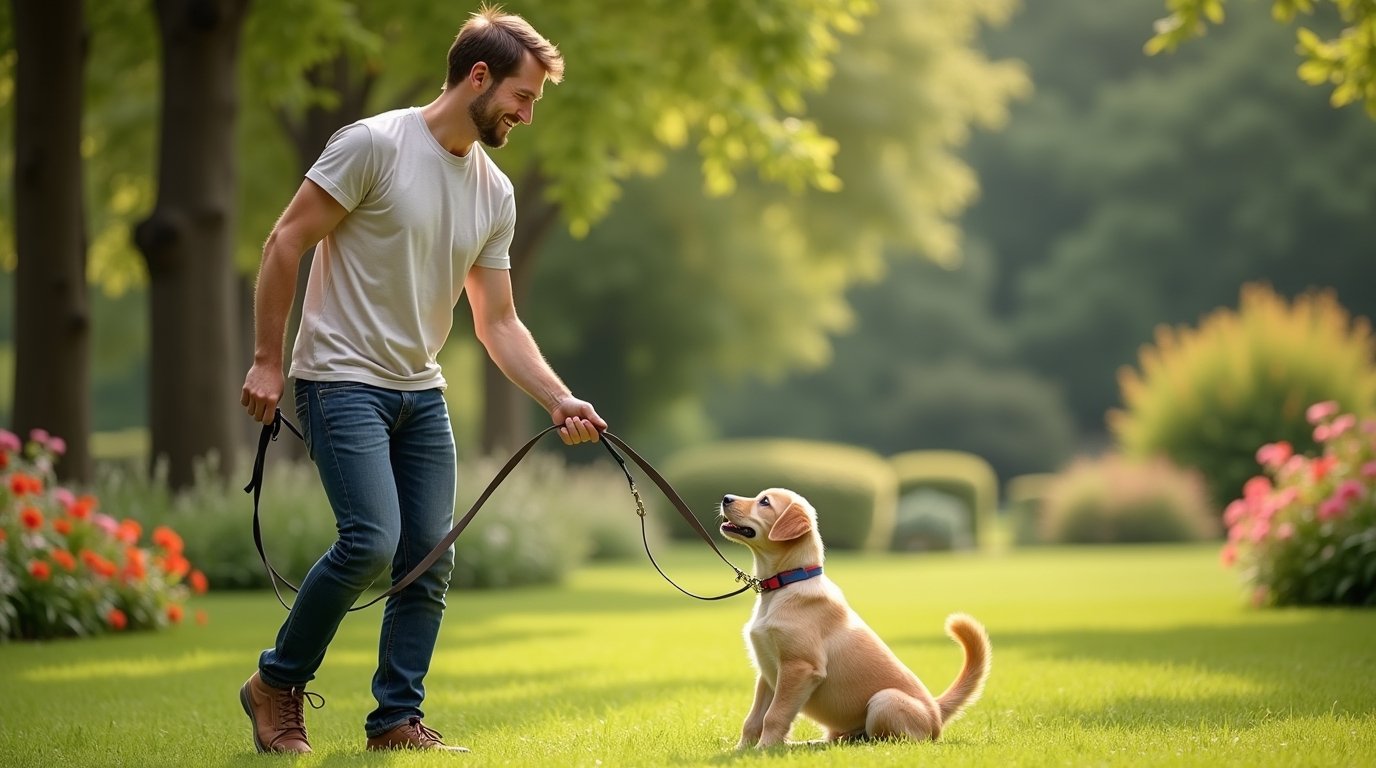Bringing a puppy home is an exciting time, filled with cuddles and playful antics. But, one of the critical aspects of raising a well-behaved dog is leash training—and it can be a daunting task for many new puppy owners. Leash training is essential for your puppy’s safety and your peace of mind. This article will walk you through step-by-step methods to make puppy leash training easy and effective.
Puppy Leash Training Made Easy
Why Leash Training is Essential for Puppies
Leash training is not just about teaching your puppy to walk alongside you; it’s about ensuring their safety and enhancing their social skills. A well-trained puppy is less likely to dart into traffic or get lost. It also makes outings more enjoyable for both of you, opening up opportunities for socialization and exercise. Proper leash training fosters a sense of discipline and helps build a stronger bond between you and your puppy.
What to Expect from This Guide
In this article, we’ll cover everything you need to know to get your puppy leash-ready. From understanding your puppy’s behavior to step-by-step training methods, we’ll provide you with practical tips and solutions. By the end of this guide, you’ll have the tools to turn leash training into a fun and rewarding experience for both you and your furry friend.
Understanding Your Puppy’s Behavior
How Puppies Perceive Leashes
Puppies often see leashes as foreign objects, which can make them feel uneasy. Your puppy might bite or resist the leash initially. Understanding this natural reaction is the first step toward successful leash training. Puppies need time to adjust to new experiences, and the leash is no exception.
Overcoming Fear
To help your puppy overcome the fear of the leash, introduce it gradually. Allow your puppy to sniff and explore the leash without forcing it on them. This gentle introduction can make a huge difference in how your puppy perceives the leash over time. Use treats and praise to create positive associations with the leash.
Puppy Development Stages
Puppies go through different developmental stages, and their ability to learn varies at each stage. Younger puppies, especially those under six months, are more adaptable and can be trained more easily. Understanding these stages can help you tailor your training methods to suit your puppy’s age and temperament.
Preparing for Leash Training Success
Choosing the Right Leash and Collar
Selecting the right equipment is crucial for successful leash training. A comfortable leash and collar can make the process smoother for both you and your puppy. Choose a lightweight leash that’s easy to handle and a collar that fits snugly but not too tight.
Leash Types
There are various types of leashes available, but for beginners, a standard leash is often the best choice. Retractable leashes can be useful, but they require more control and are better suited for already-trained dogs. Start with a standard leash to establish basic training before exploring other options.
Collar or Harness
Deciding between a collar or a harness depends on your puppy’s behavior and comfort. Collars are generally suitable for most puppies, but harnesses can provide better control and reduce strain on your puppy’s neck. For puppies that tend to pull, a harness may be the better option.
Setting the Training Environment
The environment plays a significant role in leash training. Start indoors where your puppy feels safe and there are fewer distractions. Once your puppy is comfortable, gradually move to a quiet outdoor area. The transition from indoors to outdoors should be smooth and gradual to ensure your puppy doesn’t feel overwhelmed.
Basic Commands to Teach Before Leash Training
“Sit” Command
Teaching your puppy to “sit” is foundational for leash training. This command helps establish control and can prevent your puppy from jumping or darting away. Use treats and positive reinforcement to teach your puppy to sit on command.
“Stay” Command
The “stay” command is equally important. It helps your puppy remain calm and still, which is crucial when attaching the leash or waiting at street corners. Practice this command in a distraction-free environment and gradually increase the level of difficulty.
Step-by-Step Puppy Leash Training Methods
 Getting Comfortable with the Leash
Getting Comfortable with the Leash
Start by letting your puppy wear the leash indoors for short periods. Use positive reinforcement to create a pleasant association with the leash. Encourage your puppy with treats and praise whenever they wear the leash without fuss.
 Starting Indoors
Starting Indoors
Begin leash training in a familiar indoor space. Short training sessions are key to early success. Walk around your home, using treats and encouraging words to keep your puppy motivated and engaged.
 Moving Outdoors
Moving Outdoors
Once your puppy is comfortable indoors, it’s time to venture outside. Choose a controlled environment with minimal distractions. Gradually increase the complexity of the surroundings as your puppy becomes more confident.
Handling Distractions
Outdoor walks come with many distractions. Train your puppy to focus on you by using treats and calling their name. Consistent practice will help your puppy learn to ignore distractions and pay attention to you.
 Loose Leash Walking
Loose Leash Walking
One of the biggest challenges is teaching your puppy not to pull on the leash. Use techniques like stopping whenever your puppy pulls and rewarding them for walking beside you. Consistency is key to correcting this behavior.
 Increasing Distance and Duration
Increasing Distance and Duration
Gradually increase the distance and duration of your walks. Start with short distances and slowly build up to longer walks. This gradual increase helps your puppy build endurance and confidence.
Common Leash Training Challenges and Solutions
Puppy Refuses to Walk
If your puppy refuses to walk, try to entice them with treats or toys. Sometimes, a change in direction can spark their interest and get them moving. Patience and encouragement are essential.
Puppy Bites the Leash
It’s common for puppies to bite the leash. To discourage this, use a firm “no” and redirect their attention with a toy or treat. Consistency in correcting this behavior will help your puppy understand that the leash is not a toy.
Overexcited Puppy
An overexcited puppy can make leash training challenging. Use calming techniques like gentle petting and soft-spoken words. Give your puppy time to settle before starting the walk.
Positive Reinforcement and Rewards
Using Treats Effectively
Treats are a powerful tool in leash training. Use them to reward good behavior and encourage your puppy to follow your commands. Keep treat sessions short and rewarding.
When to Praise and Reward
Praise and rewards should be given immediately after your puppy performs the desired behavior. This immediate reinforcement helps your puppy make positive associations with the actions you want to encourage.
Alternatives to Treats
While treats are effective, other rewards like toys and playtime can also motivate your puppy. Use a combination of rewards to keep training sessions exciting and varied.
Socializing Your Puppy During Leash Training

Introducing Your Puppy to Other Dogs
Leash training provides an excellent opportunity for socialization. Allow your puppy to meet other dogs in a controlled manner. Ensure that these interactions are positive and supervised to build confidence.
Meeting New People
Walking your puppy on a leash is a great way to introduce them to new people. Encourage friendly interactions while ensuring your puppy feels safe and secure. Positive social experiences are crucial for a well-adjusted puppy.
Progressing to Off-Leash Training
Transitioning to Off-Leash Walking
Once your puppy masters leash walking, you may want to progress to off-leash training. Start in a secure, enclosed area and gradually increase the freedom. Off-leash training requires trust and recall command mastery.
Safety Tips for Off-Leash Adventures
Always prioritize safety during off-leash adventures. Ensure your puppy is in a safe, enclosed space and gradually introduce more freedom. Keep an eye on your puppy at all times to prevent accidents.
Tools and Resources for Ongoing Training
Leash Training Apps and Devices
Several apps and devices can assist with leash training. These tools offer practical tips and real-time feedback to enhance your training sessions. Explore different options to find what works best for you and your puppy.
Books and Online Courses
Many resources are available to help you master leash training. Books and online courses provide in-depth knowledge and advanced techniques to take your training to the next level.
Conclusion
Leash training your puppy is a rewarding experience that strengthens your bond and ensures your puppy’s safety. By following these step-by-step methods, you’ll transform walks into enjoyable adventures for both you and your puppy.
Consistency, patience, and positive reinforcement are the pillars of successful leash training. Equip yourself with the right tools and knowledge, and you’ll have a well-trained puppy in no time.
Frequently Asked Questions
How Long Does It Take to Leash Train a Puppy?
The time it takes to leash train a puppy varies, but most puppies can be trained within a few weeks with consistent practice.
What Age Should I Start Leash Training My Puppy?
You can start leash training as early as 8 weeks old. Early training sets the foundation for good behavior as your puppy grows.
Is a Harness Better Than a Collar for Leash Training?
Both have their advantages. Harnesses offer more control and reduce strain on the neck, making them a good choice for puppies that pull.
What Should I Do If My Puppy Pulls on the Leash?
Stop walking when your puppy pulls and resume only when the leash is loose. This teaches your puppy that pulling doesn’t get them where they want to go.
Can I Leash Train My Puppy Without Using Treats?
While treats are effective, you can also use toys, praise, and playtime as rewards to motivate your puppy.

